Road safety is a crucial aspect of urban living, ensuring that both motorists and pedestrians can navigate the city without fear.
However, recent trends indicate a worrying decline in road safety in Singapore, particularly in the years following the COVID-19 pandemic.
In an article shared on Channel NewsAsia, Transport engineering consultant Gopinath Menon highlights the urgent need for firm action to curb irresponsible driving and restore a sense of safety on Singapore’s roads.
The Impact of COVID-19 on Driving Behaviour
 Cars and other vehicles in Singapore.
Cars and other vehicles in Singapore.
Credits: CNA/Jeremy Long
Before the pandemic, Singapore had seen a consistent decrease in road fatalities, thanks to concerted efforts by authorities and the community.
Unfortunately, the pandemic disrupted this positive trend.
The “circuit breaker” period, characterised by quieter roads, paradoxically saw an increase in speeding-related accidents and fatal drink-driving incidents.
Studies from various countries suggest that the pandemic has altered motorist behaviour, with drivers becoming more aggressive and risk-prone due to the frustrations and restrictions imposed during this time.
In Singapore, this shift in behaviour is evident.
The Singapore Police Force reported over 800 speeding violations in just three weeks following the activation of speed enforcement in red-light cameras.
It’s clear that some drivers have retained their reckless habits from the pandemic period, necessitating immediate and decisive action to prevent these behaviours from becoming ingrained.
Lowering Speed Limits in Urban Areas
 Silver Zone and Speed Limit
Silver Zone and Speed Limit
Credits: LTA Website
One proposed measure to enhance road safety is reducing the speed limit in built-up areas.
Currently, Singapore has a speed limit of 50 km/h in areas such as the Central Business District (CBD) and Housing Development Board (HDB) town centres.
Lowering this limit to 40 km/h, akin to cities like Tokyo, London, Sydney, and Toronto, could significantly reduce fatalities and accidents in areas with high pedestrian activity.
Statistics underscore the importance of lower speed limits: a pedestrian hit by a car travelling at 30 km/h has a 10% probability of fatality, which rises to 35% at 40kmh and 55% at 50kmh.
Reducing speed limits in urban areas can thus save lives by reducing the severity of collisions.
Implementing Road Modifications for Safety
 Road modifications on the road
Road modifications on the road
Credits: LTA
Enhancing road design is another effective strategy to promote safety.
Measures such as road humps, speed regulating strips, coloured pavements, and warning signs compel drivers to slow down and become more aware of their surroundings.
Recent accidents have spotlighted the need for such modifications.
For instance, the tragic incident involving a 4-year-old at River Valley’s Institution Hill emphasised the need for speed bumps on steep and curvy roads.
In another case, a student was hit at a zebra crossing outside Bukit View Secondary School, underscoring the necessity for more conspicuous warning signs.
Flashing signs with messages like “Pedestrians ahead” or “Slow” near schools could significantly enhance driver awareness, particularly during peak school hours.
Mandatory Refresher Courses for Errant Drivers
To nip bad driving habits in the bud, making refresher courses mandatory for errant drivers is crucial.
Singapore’s Driver Improvement Points System (DIPS) currently penalises drivers with demerit points for traffic violations.
Accumulating 24 points within two years leads to a 12-week licence suspension.
While drivers can attend a safe driving course to remove four demerit points, this is optional and often corrective rather than preventive.
Introducing a requirement for drivers who accumulate 16 points to attend a mandatory refresher course, with incentives for participation and penalties for non-compliance, could act as a strong deterrent to reckless driving.
Additionally, imposing community service, similar to corrective work orders for litterbugs, could further discourage dangerous behaviour.
A Part to Play
Singapore has made significant strides in road safety over the years, but the pandemic has introduced new challenges that require immediate attention.
Lowering speed limits in urban areas, implementing strategic road modifications, and mandating refresher courses for errant drivers are steps that can help break bad driving habits and restore safety on our roads.
As a community, we must continue to work together to ensure that the roads remain safe for everyone, building on the progress we have made and addressing the new risks that have emerged.
Have a story to share?
Accidents occur frequently, but as responsible road users, we can collectively contribute to reducing their frequency.
If you or someone you know has a video or story to share, please do not hesitate to email us at writer@roads.sg
Together, we can all contribute to creating safer roads for everyone.
================
Get comprehensive cover at a lower price today! Receive up to S$400 worth of petrol vouchers with AIG. T&Cs apply. Protected up to specified limits by SDIC.
Get a quote now! www.aig.sg/roads










